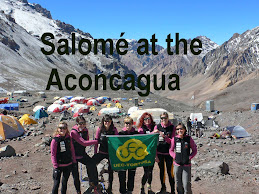Spain has 46,063,000 inhabitants according to the 2008 census. Its population density, at 91.4/km² (229/sq. mile), is lower than that of most Western European countries. With the exception of the capital, Madrid, the most populated regions lie around the coast.
The population of Spain doubled during the twentieth century, but the pattern of growth was extremely uneven due to large-scale internal migration from the rural interior to the industrial cities, a phenomenon which happened later than in other Western European countries. No fewer than eleven of Spain's fifty provinces saw an absolute decline in population over the century.
The last quarter of the century saw a dramatic fall in birth rates. Spain's fertility rate of 1.37 (the number of children the average woman will have during her lifetime) is lower than the EU average, but has climbed every year since the end nineties of the last century. The birth rate has climbed in 10 years from 9.10 births per 1000 people per year in 1996 to 10.9 in 2006.
Spain has no official religion. The Spanish Constitution of 1978 abolished the Roman Catholic Church as the official state religion, while recognizing the role it plays in Spanish society. About 80% of the population define themselves as Catholic, but 63% assert they almost never go to any religious service.
Immigration and Demographic Issues
The population of Spain doubled during the twentieth century, due to the spectacular demographic boom by the 60s and early 70s. Then, the birth rate dropped by the 80s and Spain's population became stalled, it showed one of the lowest birth rates in the world, only second to Greece, Portugal, Hungary, Ukraine and Japan. Many people link this to the lack of child support in Spain. A graphic illustration of the enormous social gulf between Spain and the rest of Europe in this field is the fact that a Spanish family would need to have 57 children to enjoy the same financial support as a family with 3 children in Luxembourg.
In emigration/immigration terms, after centuries of net emigration, Spain, has recently experienced large-scale immigration for the first time in modern history. According to the Spanish government there were 5,220,000 foreign residents in Spain in January 2008. Of these more than 700,000 were Romanian, and well over half a million were Moroccan while the number of Ecuadorians was around half a million as well. Colombian population amounted to around 300,000. There are also a significant number of British (350,000 as of 2008, but more than one million are estimated to live permanently in Spain) and German (133,588) citizens, mainly in Alicante, Málaga provinces, Balearic Islands and Canary Islands. Chinese are estimated to number over 110,000. Immigrants from several sub-Saharan African countries have also settled in Spain as contract workers, although they represent only 4.08% of all the foreign residents in the country.
Now in 2005 alone, the immigrant population of Spain increased by 700,000 people.
Allegedly, the growing immigrant population is the main reason for the slight increase in Spain's fertility rate. From 2002 through 2008 the Spanish population grew an 8%, from which 6% were foreign.
Other information
Net migration rate: 15 migrant(s)/1,000 population (2006 est.)
Religions: Roman Catholic 80.4%, atheistics or agnostics 17.2%, other 2.3. According to a December 2006 study, 41% of the population described themselves as atheist or agnostic, while 48% believed in a God or supreme being.
Languages:
· Spanish (official) 100% (89% mother tongue)
· Catalan 16% (9% mother tongue) (co-official in Catalonia, Balearic Islands, and Valencia — see Valencian)
· Galician 7% (5% mother tongue) (co-official in Galicia)
· Basque 1.6% (1% mother tongue) (co-official in Basque Country and designated areas in Navarre).
· Aranese (a variant of Gascon Occitan) is co-official in Val d'Aran, a small valley in the Pyreenes.





No comments:
Post a Comment